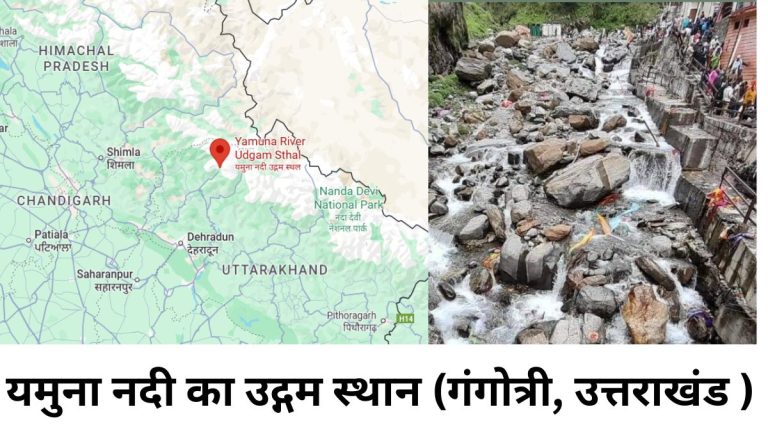Estimated reading time: 7 minutes
Table of contents
- NRSC Vision Statement
- About National Remote Sensing Centre (NRSC)
- Core Activities of National Remote Sensing Centre (NRSC)
- NRSC’s Multi-Campus Operations
- Aerial Remote Sensing and Digital Mapping at NRSC
- Ground Stations and Data Reception at Shadnagar
- Regional Remote Sensing Centers (RRSCs) and Their Role
- Conclusion
- Test Your Knowledge with MCQs
- FAQs
- You Might Also Like
The National Remote Sensing Centre (NRSC), a key division of the Indian Space Research Organization (ISRO), plays a crucial role in advancing remote sensing technology across India. With a mandate to acquire satellite data, develop geospatial applications, and support disaster management, NRSC is a central hub for satellite-based observation and data processing. Let’s dive into the activities and structure of NRSC, and how it meets the nation’s growing demand for remote sensing.
NRSC Vision Statement
“To continue to be in the forefront of developing remote sensing applications in the country and be the technology expert in establishing ground stations and generating high quality satellite and aerial data products.” (Source: https://www.nrsc.gov.in/)
About National Remote Sensing Centre (NRSC)
The National Remote Sensing Centre (NRSC), located in Hyderabad, operates under ISRO’s Department of Space (DOS). Its primary mission is to establish ground stations for receiving satellite data, generating data products, and disseminating them to various users across industries. NRSC also develops cutting-edge techniques for applying remote sensing data, including providing vital disaster management support and geospatial services for good governance. In addition, the center is dedicated to capacity-building by offering specialized training for professionals, educators, and students.

Core Activities of National Remote Sensing Centre (NRSC)
NRSC performs a wide range of activities that contribute to India’s remote sensing capabilities. These include:
1. Satellite Data Acquisition and Processing: The NRSC plays a pivotal role in acquiring data from Indian remote sensing satellites as well as foreign satellites. The data is processed at their ground stations and is used for multiple applications, including Earth and climate studies, agriculture, and disaster monitoring.
2. Disaster Management Support: NRSC provides critical decision support for disaster management by using satellite imagery to assess natural disasters such as floods, cyclones, and earthquakes in real-time. This function helps authorities plan and execute effective response strategies.
3. Geospatial Services: NRSC offers a variety of geospatial services aimed at promoting good governance. These services include digital mapping, infrastructure planning, and large-scale topographic and cadastral mapping, contributing to projects in urban planning, forestry, and natural resource management.
4. Capacity Building: The outreach facility at Jeedimetla, Hyderabad, offers comprehensive training programs for professionals, students, and faculty members in remote sensing, Geographical Information System (GIS), and digital image processing.
NRSC’s Multi-Campus Operations
To meet the national and regional remote sensing data needs, NRSC operates across multiple campuses. Each campus specializes in different aspects of remote sensing and serves regional requirements:
Main Campus, Balanagar, Hyderabad: This campus focuses on administration, remote sensing applications, and aerial services.
Shadnagar Campus: Primarily responsible for satellite data reception, data processing, Earth observation, and climate studies. The facility also provides disaster management support.
Regional Centres (RRSCs): NRSC operates five regional centers across India, located in Jodhpur (West), New Delhi (North), Kolkata (East), Nagpur (Central), and Bangalore (South). These centers promote remote sensing applications at both national and regional levels.
Aerial Remote Sensing and Digital Mapping at NRSC
The Aerial Services and Digital Mapping (ASDM) Area at NRSC provides end-to-end solutions for large-scale applications. These include aerial photography, digital mapping, scanner surveys, and aeromagnetic surveys. The aerial services play a significant role in infrastructure planning and the creation of detailed maps, including topographic and cadastral level mapping, which are essential for national development projects.
Ground Stations and Data Reception at Shadnagar
The NRSC ground station at Shadnagar, near Hyderabad, is a key facility for Earth Observation. It receives data from both Indian and foreign satellites, making it a crucial hub for remote sensing activities. The facility processes this data for various applications, including agricultural monitoring, environmental studies, and urban planning.
Regional Remote Sensing Centers (RRSCs) and Their Role
The Regional Remote Sensing Centres (RRSCs) support national and regional remote sensing tasks and are involved in diverse projects such as natural resource management, urban planning, and disaster response. In addition to executing these application projects, the RRSCs focus on software development and customization, ensuring that remote sensing data is tailored to user requirements. They also offer regular training programs in geo-spatial technology and GIS applications.
Conclusion
The National Remote Sensing Centre (NRSC) is a cornerstone of India’s remote sensing capabilities, ensuring that satellite data is available for various applications across the country. From disaster management to geospatial services, NRSC’s contribution to national development is immense. Its multi-campus operations and advanced technologies help make remote sensing accessible and valuable for governance, planning, and research, ensuring that India remains at the forefront of satellite technology.
Test Your Knowledge with MCQs
1.Which of the following are responsibilities of the National Remote Sensing Centre (NRSC)?
A. Establishment of ground stations for receiving satellite data
B. Disaster management support
C. Monitoring political elections
D. Capacity building for professionals and students
2.Match the following NRSC campuses with their key functions:
1. Shadnagar Campus
2. Main Campus (Balanagar)
3. Begumpet Airport Facility
4. Regional Centres (RRSCs)
a. Aerial remote sensing and digital mapping services
b. Data reception, processing, and disaster management
c. Administration and remote sensing applications
d. Regional-level support for remote sensing tasks and geospatial services
3.Which of the following is a primary function of NRSC’s Shadnagar campus?
A. Capacity building
B. Satellite data reception and disaster management support
C. Political analysis
D. Digital mapping of urban areas
4. Assertion (A): NRSC operates regional centers to promote remote sensing applications at the state level.
Reason (R): Regional centers (RRSCs) specialize in tasks like natural resource management and software development for geospatial technology.
A. Both A and R are true, and R is the correct explanation of A.
B. Both A and R are true, but R is not the correct explanation of A.
C. A is true, but R is false.
D. Both A and R are false.
5.Which of the following activities are carried out by the Aerial Services and Digital Mapping (ASDM) Area of NRSC?
A. Aerial photography
B. Cadastral level mapping
C. Election result prediction
D. Infrastructure planning
6.Match the following NRSC services with their descriptions:
1. Satellite Data Processing
2. Disaster Management Support
3. Geospatial Services
4. Capacity Building
a. Offering training programs for professionals, students, and educators
b. Providing decision support using satellite imagery during natural disasters
c. Converting raw satellite data into useful formats
d. Supporting urban planning and large-scale mapping projects
7.Which of the following is true about NRSC’s ground station at Shadnagar?
A. It only receives data from Indian satellites
B. It acquires data from both Indian and foreign satellites
C. It focuses on educational outreach only
D. It is a hub for regional political analysis
8. Assertion (A): NRSC provides vital geospatial services that support good governance in India.
Reason (R): Geospatial services from NRSC include infrastructure planning and topographic mapping, crucial for decision-making in governance.
A. Both A and R are true, and R is the correct explanation of A.
B. Both A and R are true, but R is not the correct explanation of A.
C. A is true, but R is false.
D. Both A and R are false.
9.Which of the following are handled by NRSC’s regional centers (RRSCs)?
A. Software development and customization
B. Conducting political surveys
C. Geospatial technology training programs
D. Data reception from international satellites
10.What is the primary role of NRSC’s outreach facility at Jeedimetla, Hyderabad?
A. Launching new satellites
B. Training professionals, faculty, and students in remote sensing
C. Collecting political data
D. Processing satellite data for meteorological studies
Answers:
1. A – True, B – True, C – False, D – True
2. 1-b, 2-c, 3-a, 4-d
3. B
4. A
5. A – True, B – True, C – False, D – True
6. 1-c, 2-b, 3-d, 4-a
7. B
8. A
9. A – True, B – False, C – True, D – False
10. B
FAQs
The National Remote Sensing Centre (NRSC) is situated in Hyderabad, India.
NRSC provides various geospatial services, including digital mapping, infrastructure planning, and large-scale topographic and cadastral mapping. These services contribute to good governance and support projects in urban planning, forestry, and natural resource management.
NRSC offers comprehensive training programs in remote sensing, GIS, and digital image processing for professionals, students, and faculty members. This capacity building initiative ensures a skilled workforce and promotes the widespread application of remote sensing technology in India.





























